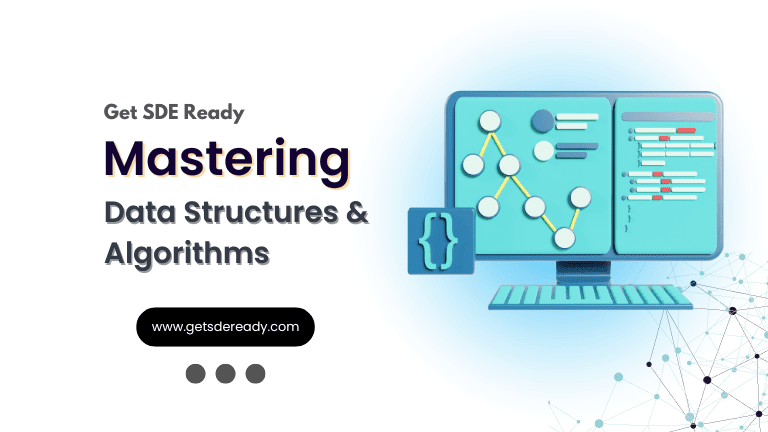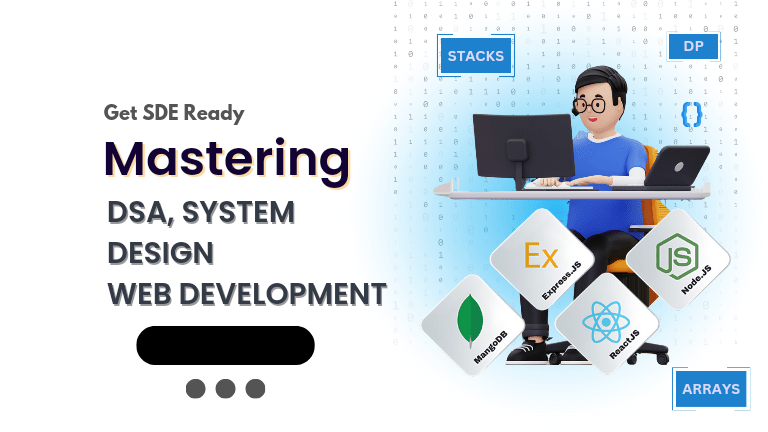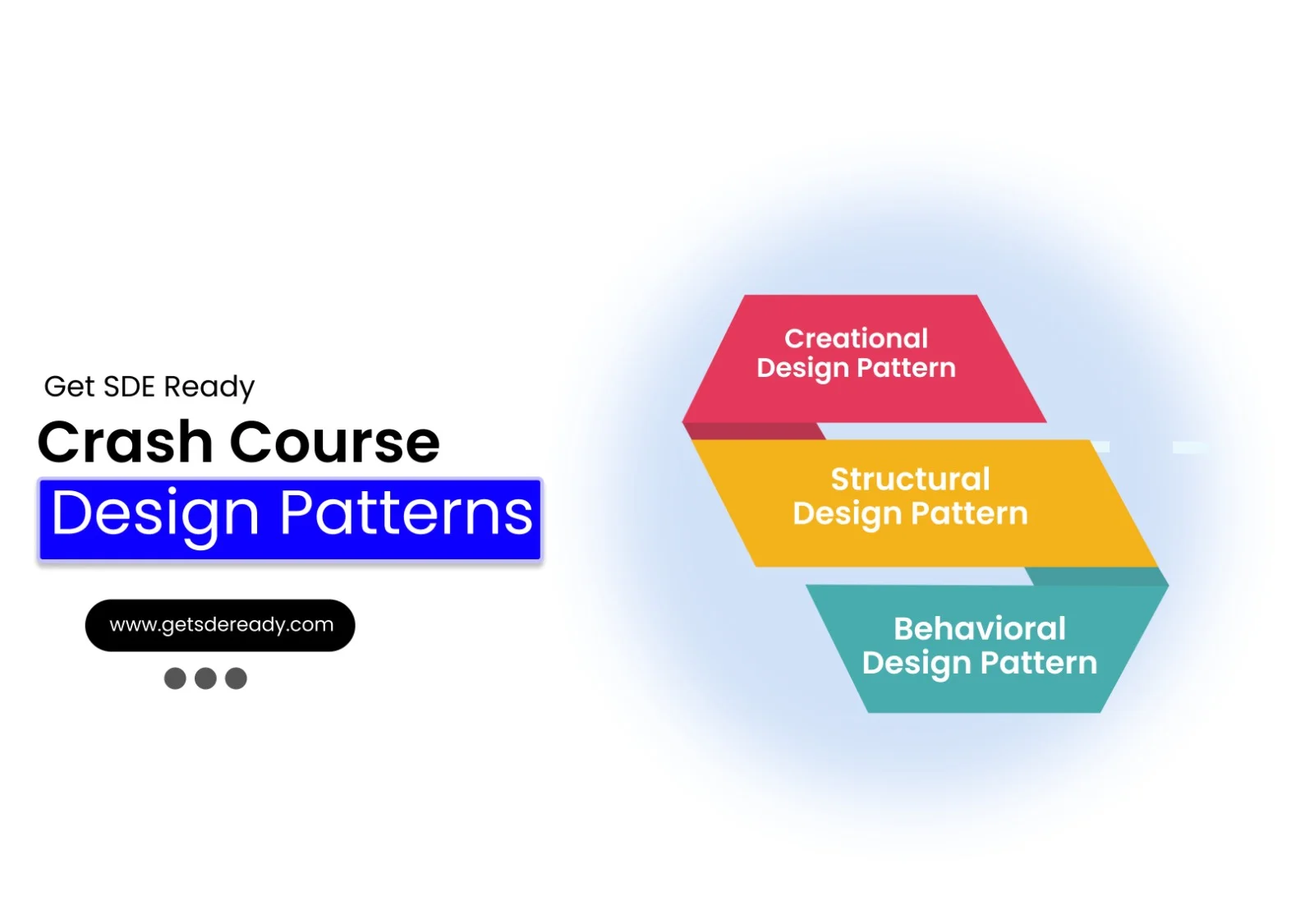Data Structures and Algorithms
- Introduction to Data Structures and Algorithms
- Time and Space Complexity Analysis
- Big-O, Big-Theta, and Big-Omega Notations
- Recursion and Backtracking
- Divide and Conquer Algorithm
- Dynamic Programming: Memoization vs. Tabulation
- Greedy Algorithms and Their Use Cases
- Understanding Arrays: Types and Operations
- Linear Search vs. Binary Search
- Sorting Algorithms: Bubble, Insertion, Selection, and Merge Sort
- QuickSort: Explanation and Implementation
- Heap Sort and Its Applications
- Counting Sort, Radix Sort, and Bucket Sort
- Hashing Techniques: Hash Tables and Collisions
- Open Addressing vs. Separate Chaining in Hashing
- DSA Questions for Beginners
- Advanced DSA Questions for Competitive Programming
- Top 10 DSA Questions to Crack Your Next Coding Test
- Top 50 DSA Questions Every Programmer Should Practice
- Top Atlassian DSA Interview Questions
- Top Amazon DSA Interview Questions
- Top Microsoft DSA Interview Questions
- Top Meta (Facebook) DSA Interview Questions
- Netflix DSA Interview Questions and Preparation Guide
- Top 20 DSA Interview Questions You Need to Know
- Top Uber DSA Interview Questions and Solutions
- Google DSA Interview Questions and How to Prepare
- Airbnb DSA Interview Questions and How to Solve Them
- Mobile App DSA Interview Questions and Solutions
DSA Interview Questions
- DSA Questions for Beginners
- Advanced DSA Questions for Competitive Programming
- Top 10 DSA Questions to Crack Your Next Coding Test
- Top 50 DSA Questions Every Programmer Should Practice
- Top Atlassian DSA Interview Questions
- Top Amazon DSA Interview Questions
- Top Microsoft DSA Interview Questions
- Top Meta (Facebook) DSA Interview Questions
- Netflix DSA Interview Questions and Preparation Guide
- Top 20 DSA Interview Questions You Need to Know
- Top Uber DSA Interview Questions and Solutions
- Google DSA Interview Questions and How to Prepare
- Airbnb DSA Interview Questions and How to Solve Them
- Mobile App DSA Interview Questions and Solutions
Data Structures and Algorithms
- Introduction to Data Structures and Algorithms
- Time and Space Complexity Analysis
- Big-O, Big-Theta, and Big-Omega Notations
- Recursion and Backtracking
- Divide and Conquer Algorithm
- Dynamic Programming: Memoization vs. Tabulation
- Greedy Algorithms and Their Use Cases
- Understanding Arrays: Types and Operations
- Linear Search vs. Binary Search
- Sorting Algorithms: Bubble, Insertion, Selection, and Merge Sort
- QuickSort: Explanation and Implementation
- Heap Sort and Its Applications
- Counting Sort, Radix Sort, and Bucket Sort
- Hashing Techniques: Hash Tables and Collisions
- Open Addressing vs. Separate Chaining in Hashing
- DSA Questions for Beginners
- Advanced DSA Questions for Competitive Programming
- Top 10 DSA Questions to Crack Your Next Coding Test
- Top 50 DSA Questions Every Programmer Should Practice
- Top Atlassian DSA Interview Questions
- Top Amazon DSA Interview Questions
- Top Microsoft DSA Interview Questions
- Top Meta (Facebook) DSA Interview Questions
- Netflix DSA Interview Questions and Preparation Guide
- Top 20 DSA Interview Questions You Need to Know
- Top Uber DSA Interview Questions and Solutions
- Google DSA Interview Questions and How to Prepare
- Airbnb DSA Interview Questions and How to Solve Them
- Mobile App DSA Interview Questions and Solutions
DSA Interview Questions
- DSA Questions for Beginners
- Advanced DSA Questions for Competitive Programming
- Top 10 DSA Questions to Crack Your Next Coding Test
- Top 50 DSA Questions Every Programmer Should Practice
- Top Atlassian DSA Interview Questions
- Top Amazon DSA Interview Questions
- Top Microsoft DSA Interview Questions
- Top Meta (Facebook) DSA Interview Questions
- Netflix DSA Interview Questions and Preparation Guide
- Top 20 DSA Interview Questions You Need to Know
- Top Uber DSA Interview Questions and Solutions
- Google DSA Interview Questions and How to Prepare
- Airbnb DSA Interview Questions and How to Solve Them
- Mobile App DSA Interview Questions and Solutions
Explain Continuous Integration (CI) & Continuous Deployment (CD)
In today’s fast-paced software development landscape, delivering high-quality applications quickly and reliably is essential for staying competitive. Continuous Integration (CI) and Continuous Deployment (CD) are two practices that have transformed how teams build, test, and deploy software. If you’re new to these concepts or looking to deepen your understanding, this guide will provide you with a detailed, well-researched overview of CI and CD, their benefits, implementation strategies, and the tools that can help you get started.
Before we dive in, if you’re interested in enhancing your software development skills, sign up for our free courses or get the latest updates on industry trends by visiting this link. Now, let’s explore the world of CI and CD.
Introduction to CI/CD
Continuous Integration (CI) and Continuous Deployment (CD) are practices that streamline the software development lifecycle by automating key processes. While they are often mentioned together as CI/CD, they serve distinct but complementary roles.
What is Continuous Integration?
Continuous Integration is a software development practice where developers frequently merge their code changes into a shared repository, typically multiple times a day. Each integration is automatically verified by an automated build and test process. The primary goal of CI is to detect and fix integration errors as early as possible, ensuring that the codebase remains in a working state at all times.
Key aspects of CI include:
- Frequent Integration: Developers commit changes regularly to a central repository.
- Automated Testing: Every commit triggers an automated build and test process.
- Automated Build: The build process is fully automated to ensure consistency.
- Version Control: All code and resources are stored in a version control system.
- Fast Feedback: The build and test process should be quick to provide immediate feedback to developers.
What is Continuous Delivery?
Continuous Delivery extends CI by ensuring that software can be reliably released to production at any time. It involves automating the deployment process so that every change that passes the build and test stages can be deployed to production with minimal manual intervention. However, the actual release to customers may still require a manual trigger.
Key practices in Continuous Delivery include:
- Automated Deployment: The deployment process is automated for consistency and reliability.
- Deployment Pipelines: Automate the steps from build to deployment, including testing in various environments.
- Feature Flags: Allow features to be toggled on or off without new deployments.
- Blue-Green Deployments: Use two identical production environments to switch traffic seamlessly.
- Canary Releases: Gradually roll out new versions to a small subset of users before full deployment.
What is Continuous Deployment?
Continuous Deployment takes Continuous Delivery a step further by automating the entire release process. Every change that passes all stages of the production pipeline is automatically released to customers without any manual intervention (except for failed tests). This practice enables teams to release software multiple times a day, ensuring continuous improvement and faster feedback from users.
How do CI and CD Work Together?
CI and CD are complementary practices that form a CI/CD pipeline:
- CI ensures that code is always integrable and tested.
- CD ensures that tested code can be deployed to production reliably and automatically.
Together, they bridge the gap between development and operations, enabling teams to deliver high-quality software faster and with fewer errors. For a deeper understanding of software development practices, consider exploring our Web Development course to learn how to build robust applications.

Benefits of CI/CD
Implementing CI/CD practices can transform your software development process in several ways:
- Improved Code Quality: Frequent integration and automated testing catch bugs early, reducing the overall number of defects.
- Faster Time to Market: Automated builds, tests, and deployments allow teams to release new features and fixes much quicker.
- Reduced Risk of Errors: Automation minimizes human error, making deployments more reliable.
- Enhanced Collaboration: CI/CD encourages developers to work together more closely, integrating their work regularly.
- Better Feedback Loops: Frequent deployments allow for quicker feedback from users, which can be used to improve the product.

Key Principles of Continuous Integration
To implement CI effectively, certain principles must be followed, as outlined by Martin Fowler, a pioneer in software development practices:
- Frequent Integration: Developers should commit their changes to the main branch multiple times a day.
- Automated Testing: Every commit should trigger an automated build and test process.
- Automated Build: The build process should be fully automated to ensure consistency.
- Version Control: All code, tests, and resources should be stored in a version control system.
- Fast Feedback: The build and test process should be quick (ideally under 10 minutes) to provide immediate feedback.
For a deeper dive into these principles, refer to Martin Fowler’s seminal work on Continuous Integration.
Implementing Continuous Delivery
Continuous Delivery involves several key practices to ensure that software is always releasable:
- Automated Deployment: The deployment process should be fully automated to ensure consistency and reliability.
- Deployment Pipelines: Use pipelines to automate the steps from build to deployment, including testing in staging and production-like environments.
- Feature Flags: Allow features to be enabled or disabled without requiring new deployments.
- Blue-Green Deployments: Run two identical production environments and switch traffic from one to the other after verification.
- Canary Releases: Gradually roll out new versions to a small subset of users to test stability before full deployment.

These practices ensure that deployments are smooth, low-risk, and can be performed at any time. For teams working on complex systems, understanding system design can further enhance deployment strategies. Check out our course on Mastering DSA, Web Dev, and System Design for more insights.
Tools for CI/CD
There are numerous tools available for implementing CI/CD, each with its own strengths and use cases. Below is a table summarizing some of the most popular tools:
Tool Name | Summary | Features | Website |
Bitbucket Pipelines | CI tool integrated into Bitbucket, offers CD, managed as code | Easy setup, Unified Bitbucket experience, Cloud by 3rd party | |
Jenkins | Veteran open-source CI tool, primarily on-premise, community-driven | On-premise, Open source, Robust addon/plugin ecosystem | |
AWS CodePipeline | CI tool from AWS, integrates with other AWS tools | Fully cloud, Integrated with Amazon Web services, Custom plugin support, Robust access control | |
CircleCI | Flexible CI tool, pairs well with GitHub, supports on-premise or cloud | Notification triggers, Performance optimized, Easy debugging, Analytics | |
Azure Pipelines | CI tool from Microsoft Azure, fully integrated into Azure suite | Azure platform integration, Windows support, Container support, GitHub integration | |
GitLab CI/CD | Offers full DevOps experience, modern UX, container support | On-prem or cloud hosting, Continuous security testing, Easy to learn UX | |
Atlassian Bamboo | Self-hosted CI option from Atlassian, integrates well with Atlassian suite | Best integration with Atlassian, Extensive marketplace, Container support, Trigger API |
Choosing the right tool depends on your team’s specific needs, existing infrastructure, and scalability requirements. For more information, check out comparison articles like the one from Atlassian.
Best Practices for CI/CD
To make the most out of CI/CD, follow these best practices:
- Write Good Tests: Ensure your automated tests are comprehensive and cover critical parts of your application. A solid understanding of data structures and algorithms can help you write efficient and effective tests. Consider our course on Data Structures and Algorithms to strengthen your skills.
- Keep the Build Fast: Aim for builds that complete in under 10 minutes to maintain developer productivity.
- Monitor and Feedback: Use dashboards and notifications to keep the team informed about build statuses.
- Security in CI/CD: Integrate security checks into your pipeline to catch vulnerabilities early.
- Scalability: Design your pipeline to handle growth in code size and team size.
For teams working on data-intensive applications, understanding data science principles can also enhance CI/CD processes. Explore our Data Science course for more insights.
Challenges and Solutions in CI/CD
While CI/CD offers many benefits, implementing it can come with challenges:
- Legacy Systems: Integrating CI/CD with older systems might require significant refactoring.
- Resistance to Change: Team members might be hesitant to adopt new practices.
- Complex Deployments: Some applications have complex deployment requirements that need careful handling.
Solutions include:
- Gradual Adoption: Start with CI and gradually move to CD as the team becomes comfortable.
- Training and Education: Provide resources and training to help the team understand and adopt CI/CD practices.
- Simplify Deployments: Use containerization (e.g., Docker) to make deployments more consistent and manageable.
For a deeper understanding of system design principles that can help simplify complex deployments, check out our comprehensive course on Mastering DSA, Web Dev, and System Design.
Case Studies
Many organizations have successfully implemented CI/CD to improve their software delivery. Here are a few examples:
- Netflix: Uses a CI/CD pipeline to deploy changes multiple times a day, allowing for rapid iteration and improvement.
- Etsy: Employs CI/CD to handle frequent releases, ensuring stability and quick feature rollouts.
- Spotify: Leverages CI/CD to maintain a high velocity of releases while keeping the service reliable.
These examples demonstrate how CI/CD can be scaled and adapted to different organizational needs.
Conclusion
Continuous Integration and Continuous Deployment are powerful practices that can significantly enhance your software development process. By automating builds, tests, and deployments, you can deliver high-quality software faster and with fewer errors. While there are challenges in implementing CI/CD, the benefits far outweigh the costs.
If you’re ready to take your development process to the next level, start by setting up a simple CI pipeline and gradually incorporate CD practices. Remember, the key is to automate and integrate regularly. For further learning, consider our crash course on software development here, which covers essential topics to help you build robust applications.
FAQs
What is the difference between Continuous Delivery and Continuous Deployment?
Continuous Delivery automates the process up to the point of deployment but may require manual approval for the final release. Continuous Deployment automates the entire process, including the release to production, without manual intervention.
How does CI/CD improve software development?
CI/CD improves software development by reducing integration issues, speeding up release cycles, enhancing code quality through automated testing, and fostering better collaboration among team members.
What are some popular CI/CD tools?
Popular CI/CD tools include Jenkins, GitLab CI/CD, CircleCI, Travis CI, Azure Pipelines, AWS CodePipeline, and GitHub Actions.
How can I get started with CI/CD in my project?
Start by setting up a version control system, writing automated tests, and configuring a CI tool to run builds and tests on every commit. Gradually, automate the deployment process to achieve Continuous Delivery or Deployment.
Is CI/CD suitable for small teams or startups?
Yes, CI/CD is beneficial for teams of all sizes. Small teams and startups can particularly benefit from the efficiency and reliability that CI/CD brings, allowing them to compete with larger organizations in terms of release frequency and quality.

DSA, High & Low Level System Designs
- 85+ Live Classes & Recordings
- 24*7 Live Doubt Support
- 400+ DSA Practice Questions
- Comprehensive Notes
- HackerRank Tests & Quizzes
- Topic-wise Quizzes
- Case Studies
- Access to Global Peer Community
Buy for 60% OFF
₹25,000.00 ₹9,999.00
Accelerate your Path to a Product based Career
Boost your career or get hired at top product-based companies by joining our expertly crafted courses. Gain practical skills and real-world knowledge to help you succeed.

Mastering Data Structures & Algorithms
- 65+ Live Classes & Recordings
- 24*7 Live Doubt Support
- 400+ DSA Practice Questions
- Comprehensive Notes
- HackerRank Tests
- Access to Global Peer Community
- Topic-wise Quizzes
- Interview Prep Material
Buy for 50% OFF
₹9,999.00 ₹4,999.00

Data Analytics
- 20+ Live Classes & Recordings
- 24*7 Live Doubt Support
- 15+ Hands-on Live Projects
- Comprehensive Notes
- Real-world Tools & Technologies
- Access to Global Peer Community
- Interview Prep Material
- Placement Assistance
Buy for 70% OFF
₹9,999.00 ₹2,999.00

Low & High Level System Design
- 20+ Live Classes & Recordings
- 24*7 Live Doubt Support
- Case Studies
- Comprehensive Notes
- HackerRank Tests
- Topic-wise Quizzes
- Access to Global Peer Community
- Interview Prep Material
Buy for 65% OFF
₹20,000.00 ₹6,999.00

Fast-Track to Full Spectrum Software Engineering
- 120+ Live Classes & Recordings
- 24*7 Live Doubt Support
- 400+ DSA Practice Questions
- Comprehensive Notes
- HackerRank Tests & Quizzes
- 12+ live Projects & Deployments
- Case Studies
- Access to Global Peer Community
Buy for 57% OFF
₹35,000.00 ₹14,999.00

DSA, High & Low Level System Designs
- 85+ Live Classes & Recordings
- 24*7 Live Doubt Support
- 400+ DSA Practice Questions
- Comprehensive Notes
- HackerRank Tests & Quizzes
- Topic-wise Quizzes
- Case Studies
- Access to Global Peer Community
Buy for 60% OFF
₹25,000.00 ₹9,999.00

Design Patterns Bootcamp
- Live Classes & Recordings
- 24/7 Live Doubt Support
- Practice Questions
- Case Studies
- Access to Global Peer Community
- Topic wise Quizzes
- Referrals
- Certificate of Completion
Buy for 50% OFF
₹2,000.00 ₹999.00
Reach Out Now
If you have any queries, please fill out this form. We will surely reach out to you.
Contact Email
Reach us at the following email address.
arun@getsdeready.com
Phone Number
You can reach us by phone as well.
+91-97737 28034
Our Location
Rohini, Sector-3, Delhi-110085